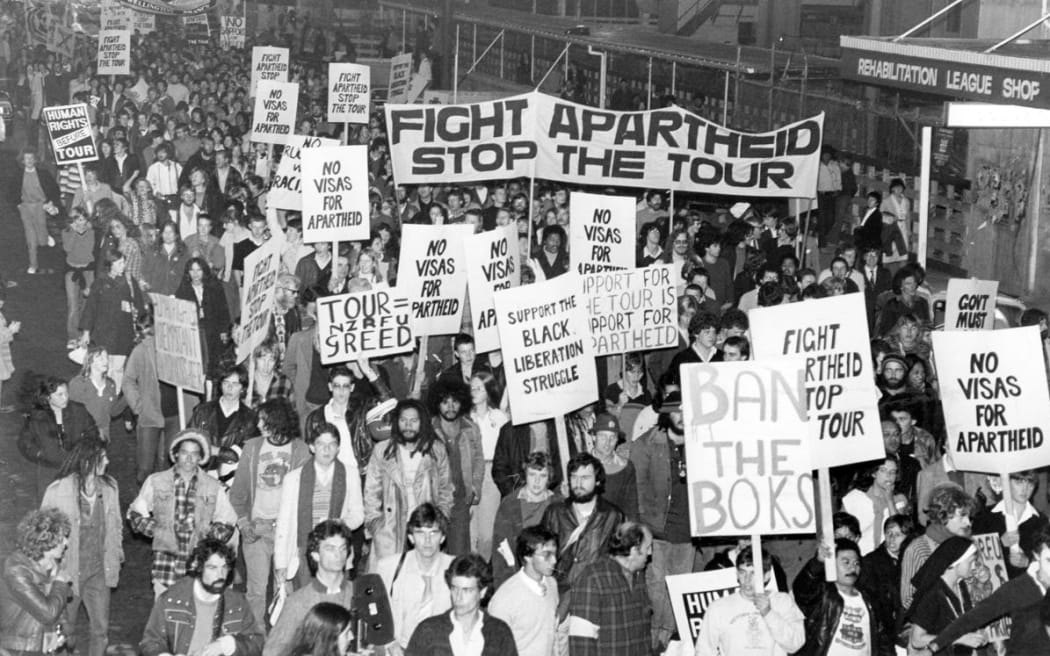
About 1.4 million historic photos from leading New Zealand newspapers were shipped to the US as part of an ill-fated digitisation project. Photo: Duncan Miller Gallery
It is one of the great debacles of New Zealand history-keeping - an irreplaceable collection of more than a million photos capturing key events and people in the nation's history almost ended up in a rubbish dump in America.
The photos were part of the Fairfax archive shipped to the US in 2013 in an ill-fated plan to digitise the media company's vast image collection.
They included pictures from leading newspapers such as The Press, The Dominion and The Waikato Times.
However, not long after the prints arrived in the US, the company contracted to digitise the photos, Rogers Photo Archive, ran into financial and legal strife.
The firm was placed in receivership while the photos were left to moulder and almost taken to the tip.
Eventually, a photo gallery specialising in historic images bought them from the receiver, and now they're being sold, bit by bit, back to New Zealand.
But it turns out not all of Fairfax's photos were shipped to the US.
For reasons unknown, part of the collection never left Aotearoa and instead ended up scattered around the country.
One such case is The Northern News archive, a treasure trove of photographic prints, negatives and newspapers dating back to the Kaikohe newspaper's first edition in 1919.
Although still published once a week by Stuff, its current owner, The Northern News has not had an office or staff of its own since 2015.
None of its last three editors knew where the archive had ended up. At least one feared it had been lost forever, most likely at the bottom of a landfill.
Enquiries by RNZ have, however, revealed much of the newspaper's archive survives, split between Kerikeri and Auckland.
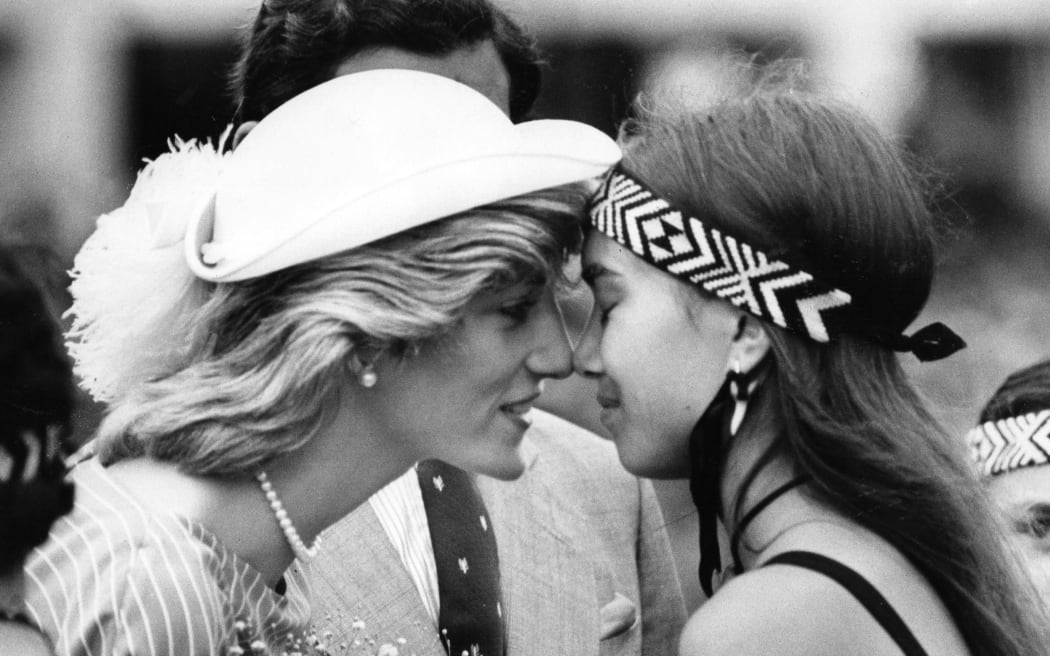
Diana, Princess of Wales, hongis a young woman at Eden Park during a royal visit in 1983. Photo: Duncan Miller Gallery
The saga goes back to 2012 when Kaikohe photographer Debbie Beadle had a verbal agreement to digitise The Northern News photo archive.
Beadle did not charge for her work but was allowed to retain, sell and display digital copies. The negatives were returned to The Northern News after scanning.
That was in contrast to the deal struck between the then-Australian-owned Fairfax and Rogers Photo Archive, in which the US company retained and was permitted to sell the original prints - in fact, some photos started turning up on Ebay even before digitisation was finished.
Beadle said she was motivated by a fear the photos would be lost as the newspaper downsized, and a desire to preserve local history and make it available to Northlanders.
Many of the photos lacked caption information so she set up a Facebook page where the public could identity people or events.
She had scanned 43,000 negatives, starting from 1972 and working her way towards the present, when she was contacted by Fairfax's then general manager for Northland and ordered to "cease and desist".
Beadle was told the images had been sold overseas and that a staff member would arrive within half an hour to collect the negatives and her scans.
She believed the Northland photos were to have been sent to the US in a second shipment but that never happened.
It is not clear if that was due to controversy about the plan or because Rogers Photo Archive was by then already in financial trouble.
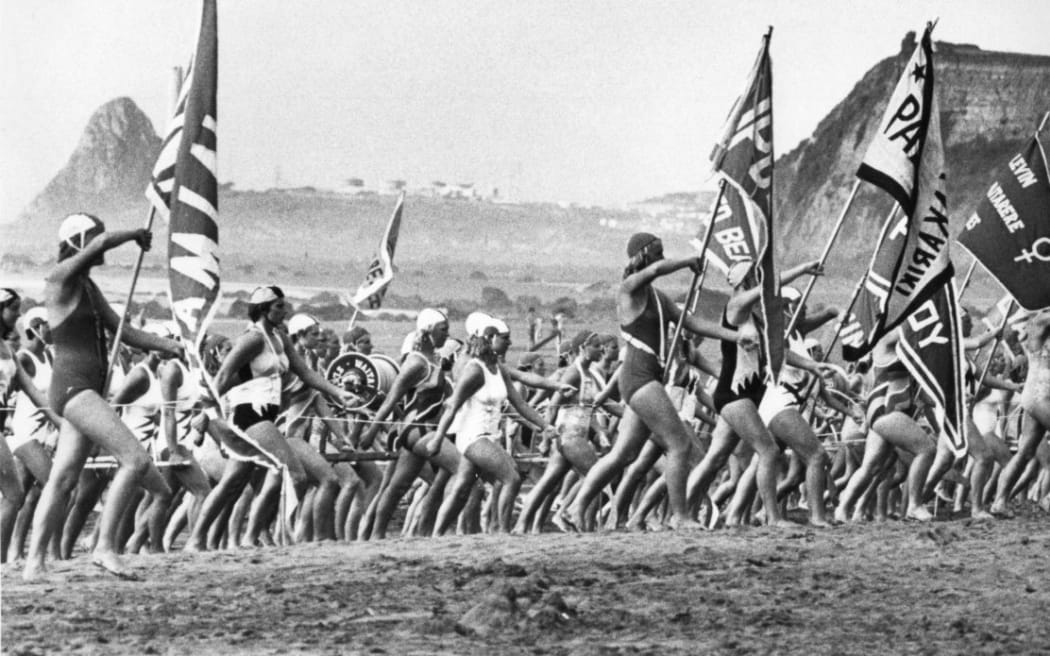
Surf lifesavers march during the national championships at Ōakura Beach, near New Plymouth, in 1981. Photo: Duncan Miller Gallery
When Northern News editor Malcolm McMillan retired in 2012, Fairfax management told him the archive would be looked after.
As well as folders of negatives and boxes of sports photos, his office held bound copies of every edition of the newspaper dating back to 1919.
"I was given an assurance the archive was going to be well taken care of, because it was so unique … But then the whole lot just disappeared," he said.
At one point Shaun Reilly, a former Northern News photographer, took the photo collection to the Pioneer Village, a local history museum, because he believed that was the safest place.
He also wanted the images to stay in Kaikohe if the newspaper closed down.
He was, however, over-ridden and the images were returned.
The Northern News office closed down in 2015, with the newspaper subsequently run from the office of its sister paper in Kerikeri, The Bay Chronicle.
The Northern News archive was reportedly shifted to Kerikeri but Keri Molloy, The Bay Chronicle's editor at the time, said she had not seen it since the Kaikohe office closed.
Fairfax, by then rebranded as Stuff, shut the Kerikeri office and laid off its remaining Far North staff in 2018.
RNZ contacted Daniel Miller, the gallery owner in Los Angeles who now owns the Fairfax archive, to ask if he had The Northern News' missing photos.
Miller said newspapers included in the collection were The Press, Sunday Star Times, Manawatu Standard, Southland Times, Taranaki Daily News, Timaru Herald, Waikato Times, The Dominion and The Evening Post.
As far as he knew, no Northland photos were shipped to the US, but it was possible some were mixed up with images from bigger papers.
RNZ did, however, find part of the archive at Kerikeri's Procter Library.
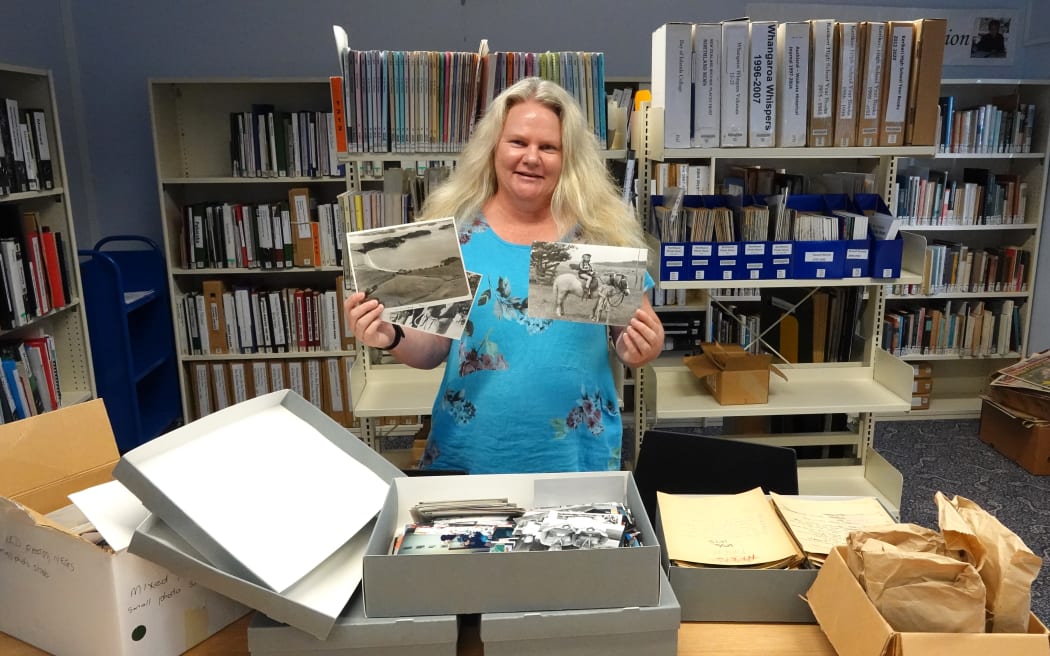
Far North Libraries local history specialist Fiona Jenkins with part of the Fairfax archive which has ended up at Kerikeri's Procter Library. Photo: RNZ / Peter de Graaf
Fiona Jenkins, local history specialist for Far North Libraries, said she was offered copies of The Northern News going back to 1919 when the Kerikeri office closed down.
"We would've dearly loved to take them, but we just don't have the room," she said.
What she could take was about 10 boxes of photos - mostly of sporting events with little identifying information - as well as negatives in paper bags and indexed contact sheets.
Jenkins said she was gradually digitising the photos and sharing some on the Procter Library's Facebook page in an effort to identity them.
The most significant photos were posted on library's history portal, Recollect.
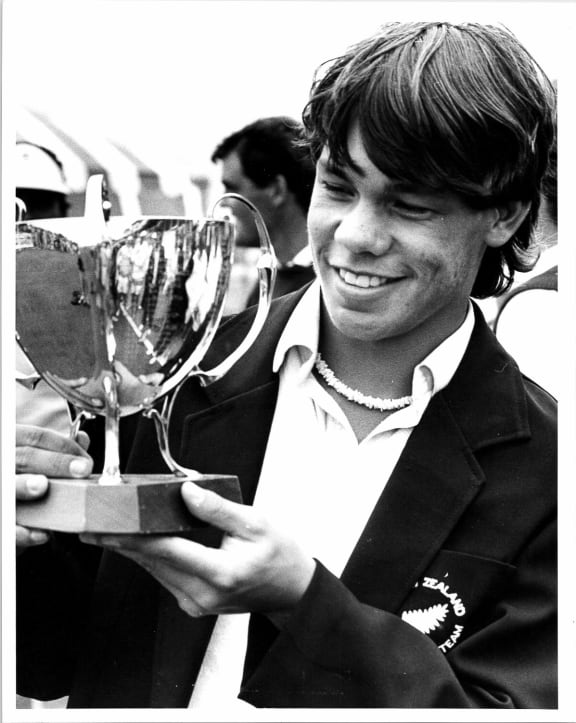
Picture of Phil Tataurangi from the Fairfax Archives, which was among the collection shipped to the US. Photo: Fairfax Archive / NZ Golf
Jenkins said she accepted the photos because she wanted them to stay in the region.
"There are so few places in Northland now where you can access local history because it gets sent away to the big cities. It's sad."
The Procter Library, however, has only a fraction of the collection.
Shaun Reilly, the former Northern News photographer, believed the rest had been sent to Auckland Museum.
Museum staff told RNZ said they had received a donation of negatives from Fairfax's Auckland-based newspapers in 2016, but they didn't have any images from Northland.
They suggested RNZ try Auckland Libraries instead.
There, principal photographs librarian Keith Giles told RNZ he had been contacted in 2018 by a Stuff employee about a folder of historic photographs.
He was told the folder was part of The Northern News archive transferred to Kerikeri when the Kaikohe office shut down.
The staff member was concerned the heritage photos, along with negatives and vintage newspapers, would be dumped if the Kerikeri office could not find a home for them.
Auckland Libraries staff made three trips to Kerikeri, picking up three filing cabinets full of prints, a large number of negatives dating back to the 1970s, copies of The Northern News from 1919 to the 1940s, and a handful of glass-plate negatives.
"We thought it was important to preserve these items rather than see them disposed of," Giles said.
The folder of historic photos could not be found.
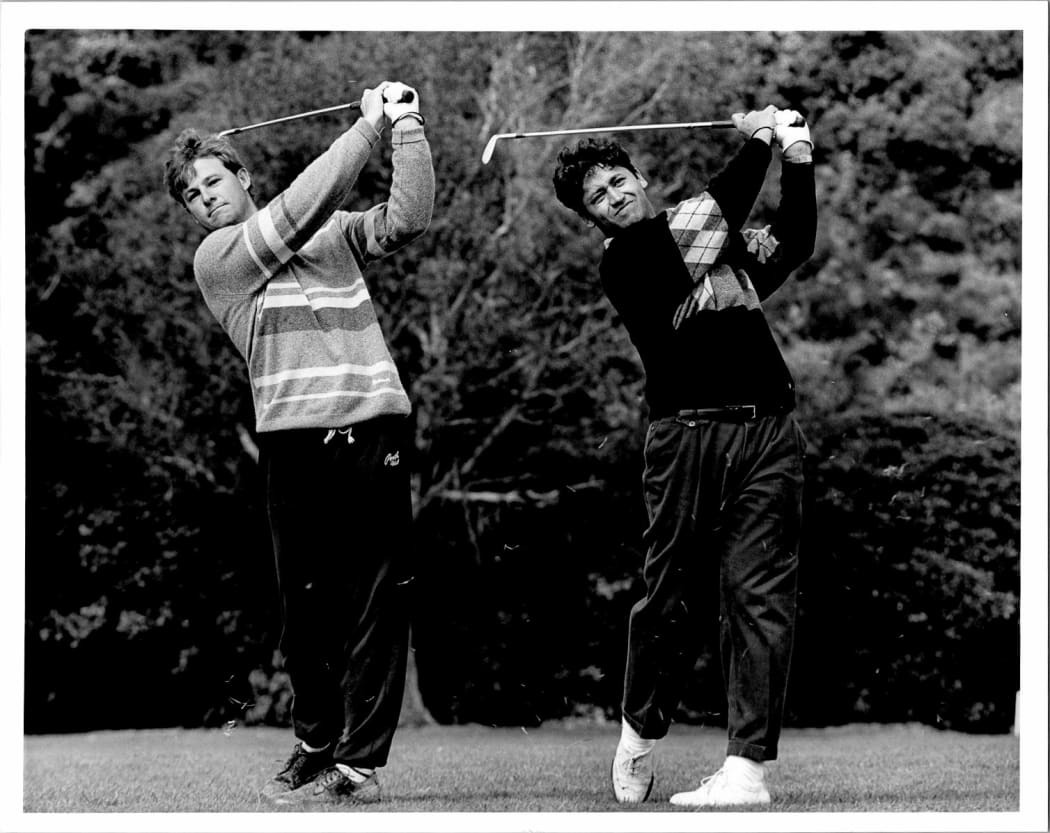
A Fairfax Archive photo of Stephen Scahill and Michael Campbell, which NZ Golf bought from the Duncan Miller Gallery. Photo: Fairfax Archive / NZ Golf
Giles said Auckland Libraries planned to catalogue and digitise the images, as resourcing allowed, but the immediate priority at the time was to ensure they were saved.
While The Northern News archive did not end up in the US, many photos of prominent Northlanders did, via the collections of larger newspapers - including photos of land rights campaigner and "Mother of the Nation" Dame Whina Cooper.
They are among more than 5000 images of Māori purchased by the National Library from the Los Angeles-based Duncan Miller Gallery and now back in New Zealand.
The images are currently being sorted through and catalogued.
Dame Whina's daughter, Hinerangi Cooper-Puru, of Panguru, said she was pleased the photos had been returned, and was looking forward to seeing pictures of her mother that had come so close to being lost forever.
She was, however, concerned they had been sent overseas in the first place, without permission from iwi or whānau.
"I'm concerned that they ever left our country, Aotearoa … This must not happen again," she said.
Prominent historian Vincent O'Malley said the Ministry for Culture and Heritage should never have allowed the photos to be sent overseas.
"This is 1.4 million photos that constitute an incredible photographic record of New Zealand's history, and it's really tragic that it's been lost to the country in this way," he said.
At the time, Fairfax executive editor Paul Thompson - now chief executive of RNZ - said digitising the collection in New Zealand would have been prohibitively expensive, and the photos were deteriorating because they could not be stored properly.
Some had already been lost in the Christchurch earthquakes.
Each image would have cost $2-$4 to digitise locally, resulting in an overall cost of millions of dollars.
At the time he said the key thing was not the physical photos themselves but having access to digital versions that could be searched for in a database and used.
However, O'Malley said the physical photos themselves were historic artefacts of great significance.
"That's obvious from the fact they are being sold off, piece by piece. It's wonderful the National Library has secured 5300 images but that's less than 1 percent of the total collection. It still represents a vast loss of our cultural heritage."
Fairfax Media obtained much of the photo archive when it bought Independent Newspapers Ltd in 2003.
Sending the archive to the US was part of a bigger project by the Australian-owned company to digitise its image collections on both sides of the Tasman.
Millions more prints were sent to Rogers Photo Archive from leading Australian newspapers such as The Age and The Sydney Morning Herald.
Stuff said digitisation of the New Zealand archive had eventually been completed in the US, as directed by the receiver, and electronic versions had been returned.



